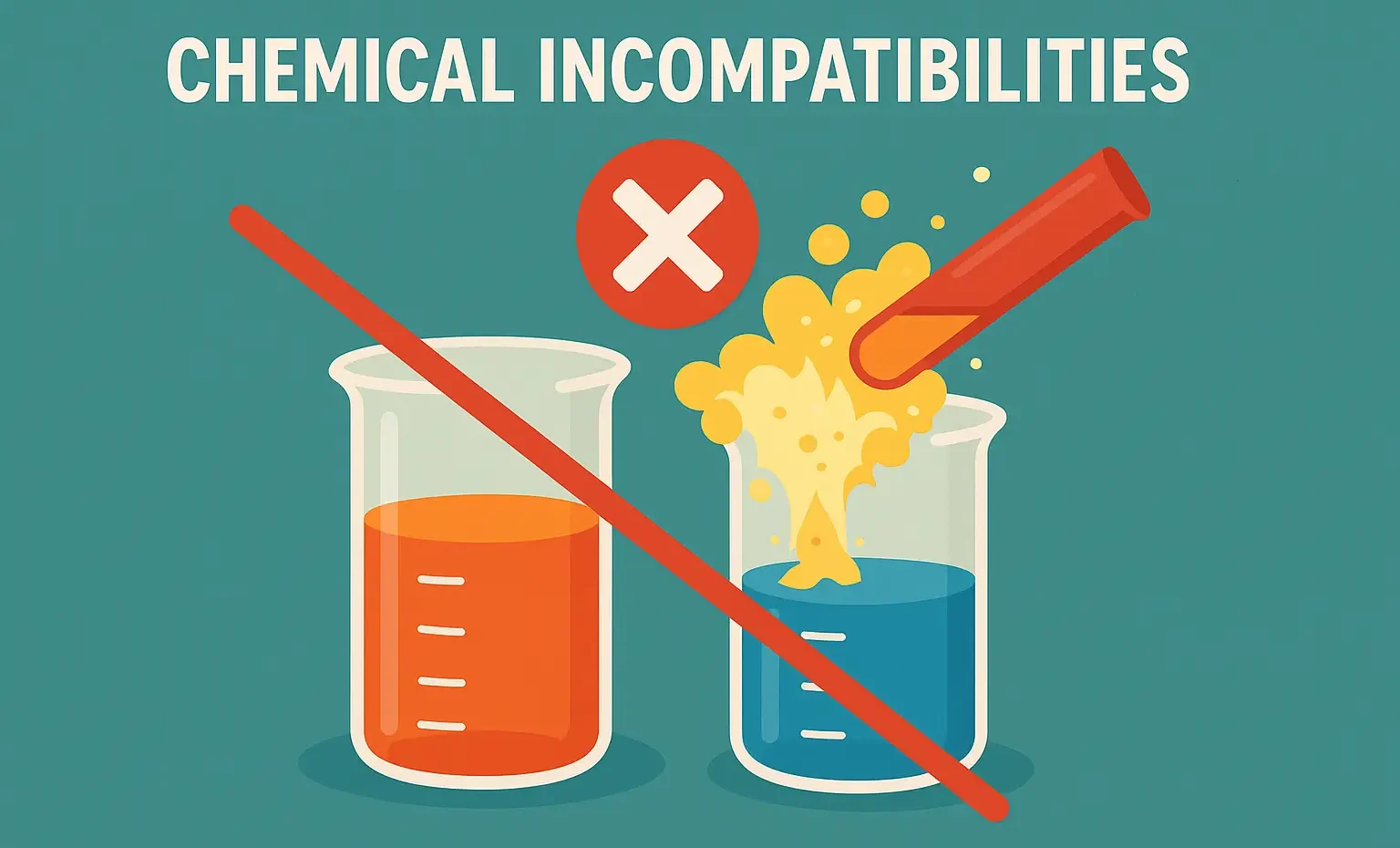Definition of Chemical Incompatibilities:
Chemical incompatibilities involve undesirable reactions between substances in a pharmaceutical formulation, leading to degradation, formation of new compounds, or changes in stability, appearance, or efficacy.
Examples of Chemical Incompatibilitie:
-
Alkaloid Incompatibilities
- Alkaloids can form insoluble salts when mixed with acids.
- Example: Morphine forms an insoluble precipitate when mixed with tannic acid.
-
Soluble Salicylate Incompatibilities
- Salicylates like aspirin can react with other substances.
- Example: Aspirin mixed with iron(III) ions forms a purple precipitate of ferric salicylate.
-
Soluble Iodide Incompatibilities
- Iodides can react with other compounds, forming insoluble precipitates or causing oxidation.
- Example: Potassium iodide mixed with lead(II) nitrate forms an insoluble yellow precipitate of lead(II) iodide.
-
Incompatibilities Causing CO₂ Evolution
- Some reactions produce carbon dioxide, affecting product stability.
- Example: Sodium bicarbonate and citric acid in effervescent tablets react in water, releasing CO₂ and dissolving the tablet.
-
Miscellaneous Incompatibilities
- Other reactions can lead to drug inactivation or degradation.
Example: Penicillin mixed with aminoglycosides (e.g., gentamicin) leads to the inactivation of both drugs
Click Here to Watch the Best Pharma Videos

